A compilation of the most memorable space weather moments of 2008 can be found underneath. Using the fantastic (J)Helioviewer software, a ***MOVIE*** was created containing one or more clips of each event. Usually, images obtained by SOHO and the STEREO spacecraft were used.
This is a chronological list of punctual events on the Sun. Despite that the solar activity is going through a deep minimum, there were still about a dozen events to choose from.
We hope you enjoy the movie clips and the brief summaries!
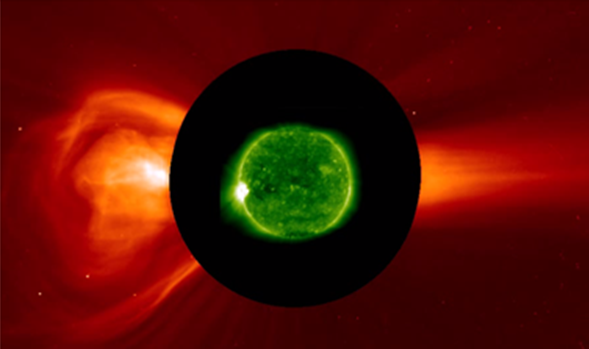 In 2008, only one M-class and eight C-class flares were observed. The event with the longest duration occurred during the morning hours of 2 January. The flare took place in NOAA 0980 close to the east limb, and lasted a whopping 4 hours and 32 minutes (272 minutes). A coronal mass ejection (CME) was associated with the C1 flare, but it had no earth-directed component. NOAA 0980 would produce a total of 3 C-class flares.
In 2008, only one M-class and eight C-class flares were observed. The event with the longest duration occurred during the morning hours of 2 January. The flare took place in NOAA 0980 close to the east limb, and lasted a whopping 4 hours and 32 minutes (272 minutes). A coronal mass ejection (CME) was associated with the C1 flare, but it had no earth-directed component. NOAA 0980 would produce a total of 3 C-class flares.
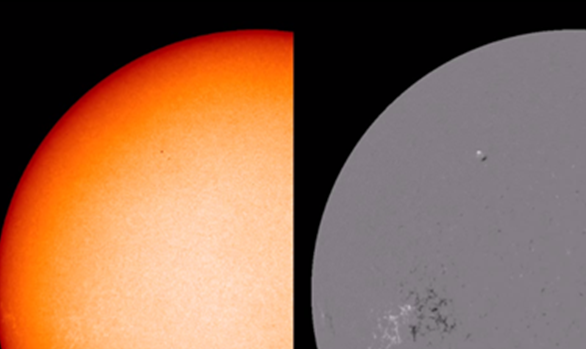 On 4 January, the first sunspot group of solar cycle 24 (SC24) appeared. NOAA 0981 had a latitude of +29°, had the correct magnetic polarity, and remained visible for 3 days. It did not produce a significant flare. 4 January was also the only day in 2008 that there was both an old cycle (NOAA 0980) and a new cycle sunspot group (NOAA 0981) at the same time visible on the solar disk. The appearance of this first "reversed" polarity region is only heralding the new solar cycle. Indeed, the monthly sunspot numbers and related solar activity parameters continued to decline for the rest of the year.
On 4 January, the first sunspot group of solar cycle 24 (SC24) appeared. NOAA 0981 had a latitude of +29°, had the correct magnetic polarity, and remained visible for 3 days. It did not produce a significant flare. 4 January was also the only day in 2008 that there was both an old cycle (NOAA 0980) and a new cycle sunspot group (NOAA 0981) at the same time visible on the solar disk. The appearance of this first "reversed" polarity region is only heralding the new solar cycle. Indeed, the monthly sunspot numbers and related solar activity parameters continued to decline for the rest of the year.
Ref: STCE news item of 8 January 2008
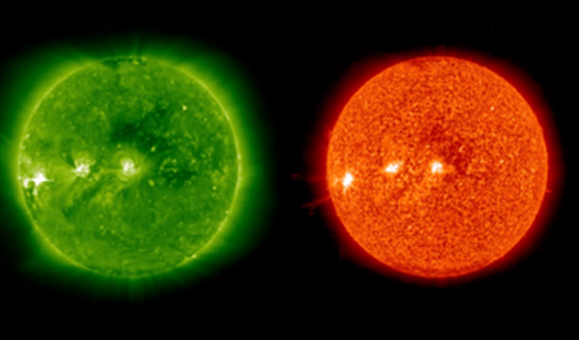 The only M-class flare of the year was produced by old cycle region NOAA 0989 on 25 March. It was the first M-class flare since 9 June 2007, when NOAA 0960 produced its last M flare. So far, the 289 days in between mark the longest period without M-flares since systematic GOES satellite x-ray measurements began in 1976.
The only M-class flare of the year was produced by old cycle region NOAA 0989 on 25 March. It was the first M-class flare since 9 June 2007, when NOAA 0960 produced its last M flare. So far, the 289 days in between mark the longest period without M-flares since systematic GOES satellite x-ray measurements began in 1976.
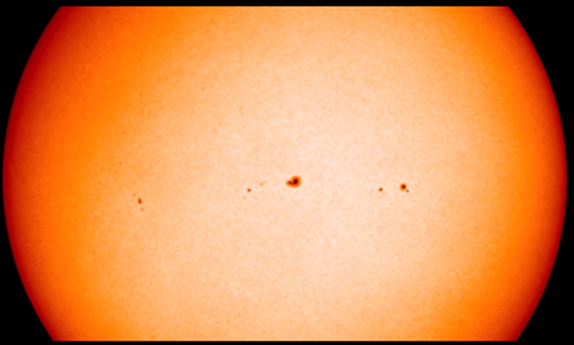 Except for a few hours on 16 May, the period from 25 till 31 March marked the only days in 2008 that there were 3 sunspot groups visible at the same time. NOAA 0987, 0988 and 0989 were all located south of and close to the solar equator and belonged to the old cycle SC23. NOAA 0987 and 0988 were also the largest sunspot groups of 2008. They reach maximum sunspot areas of resp. 170 and 300 millionths of a solar hemisphere, which corresponds to resp. 1 and nearly 2 times the total surface area of the Earth.
Except for a few hours on 16 May, the period from 25 till 31 March marked the only days in 2008 that there were 3 sunspot groups visible at the same time. NOAA 0987, 0988 and 0989 were all located south of and close to the solar equator and belonged to the old cycle SC23. NOAA 0987 and 0988 were also the largest sunspot groups of 2008. They reach maximum sunspot areas of resp. 170 and 300 millionths of a solar hemisphere, which corresponds to resp. 1 and nearly 2 times the total surface area of the Earth.
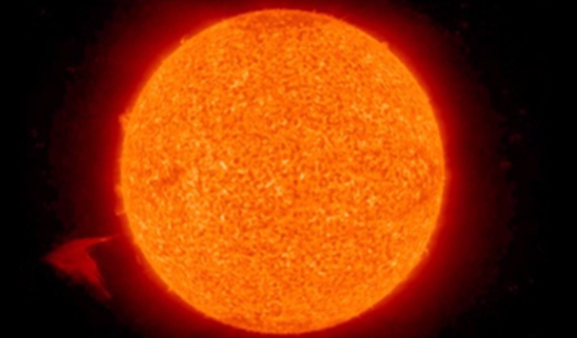 Prominences are regions of dense and relatively cool material squeezed between fields of opposite magnetic polarity. STEREO-B imaged a dynamic and impressive prominence eruption near the southeast solar limb on 13-14 July. This eruption was also visible from Earth. Indeed, in 2008, the STEREO spacecraft were separated by only about 30° from Earth (about 60° from each other).
Prominences are regions of dense and relatively cool material squeezed between fields of opposite magnetic polarity. STEREO-B imaged a dynamic and impressive prominence eruption near the southeast solar limb on 13-14 July. This eruption was also visible from Earth. Indeed, in 2008, the STEREO spacecraft were separated by only about 30° from Earth (about 60° from each other).
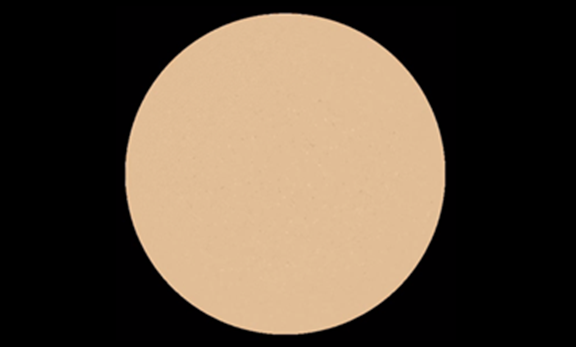 For 31 days, from 21 July till 20 August, the Sun was completely blanc. It is the longest spotless period of the year and so far this solar cycle transit. Starting with the complete disappearance of sunspot region NOAA 1000 on 20 July, not a single sunspot can be seen until 21 and 22 August, when a very, very small sunspot can be observed. The region does not even get a NOAA number, but the SIDC sunspot numbers are not zero for that day. These and other small, hardly visible sunspots are dubbed "Tiny Tims" and spark heated debates on the internet blogs. In the end, 2008 will total 265 spotless days, which is the most since 1913, and rank on the 4th place in years with most spotless days (since 1849).
For 31 days, from 21 July till 20 August, the Sun was completely blanc. It is the longest spotless period of the year and so far this solar cycle transit. Starting with the complete disappearance of sunspot region NOAA 1000 on 20 July, not a single sunspot can be seen until 21 and 22 August, when a very, very small sunspot can be observed. The region does not even get a NOAA number, but the SIDC sunspot numbers are not zero for that day. These and other small, hardly visible sunspots are dubbed "Tiny Tims" and spark heated debates on the internet blogs. In the end, 2008 will total 265 spotless days, which is the most since 1913, and rank on the 4th place in years with most spotless days (since 1849).
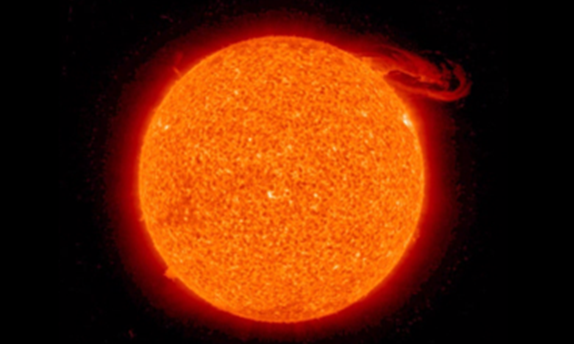 Another impressive and dynamic prominence eruption is observed. This time, it is the STEREO-A spacecraft that has the frontrow seat. There's no earth-directed CME associated with this event.
Another impressive and dynamic prominence eruption is observed. This time, it is the STEREO-A spacecraft that has the frontrow seat. There's no earth-directed CME associated with this event.
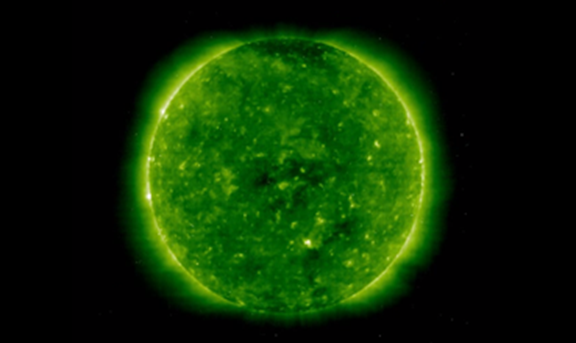 The strongest geomagnetic storm (preliminary Kp = 7; Dst = -54 nT) of the year took place on 11 October. The culprit was a gradually dissolving equatorial coronal hole (CH) that transited the centra meridian on 7 October. Moderate (Kp = 6) geomagnetic storms took place on 27 March, 5 April and 4 September (Dst = -51 nT). Other geomagnetic storms of interest occurred on 1 March (highest solar wind speed of 823 km/s) and 9 March (Dst = -89 nT). All of these more intense storms as well as the major part of the minor storms can be traced back to two equatorial CHs that were visible during the entire year (14 solar disk passages each!). These two CHs were separated by about 90 degrees (about a week), gradually changed shape, and produced mostly minor storming. By the end of the year, they seemed finally to dissolve completely, producing only active to unsettled conditions.
The strongest geomagnetic storm (preliminary Kp = 7; Dst = -54 nT) of the year took place on 11 October. The culprit was a gradually dissolving equatorial coronal hole (CH) that transited the centra meridian on 7 October. Moderate (Kp = 6) geomagnetic storms took place on 27 March, 5 April and 4 September (Dst = -51 nT). Other geomagnetic storms of interest occurred on 1 March (highest solar wind speed of 823 km/s) and 9 March (Dst = -89 nT). All of these more intense storms as well as the major part of the minor storms can be traced back to two equatorial CHs that were visible during the entire year (14 solar disk passages each!). These two CHs were separated by about 90 degrees (about a week), gradually changed shape, and produced mostly minor storming. By the end of the year, they seemed finally to dissolve completely, producing only active to unsettled conditions.
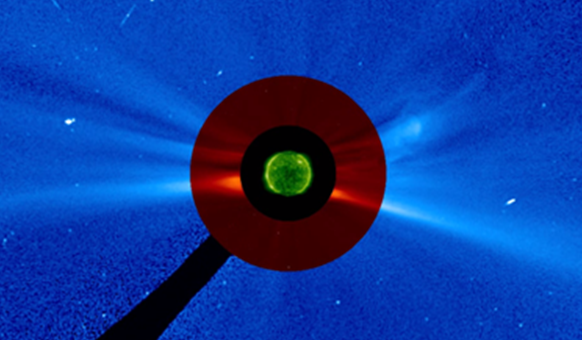 NOAA 1007 is not only the largest new cycle group of 2008, it is also the first SC24 group to produce a C-class flare. The region produced a C1 flare on both 3 and 4 November, and associated with a CME.
NOAA 1007 is not only the largest new cycle group of 2008, it is also the first SC24 group to produce a C-class flare. The region produced a C1 flare on both 3 and 4 November, and associated with a CME.
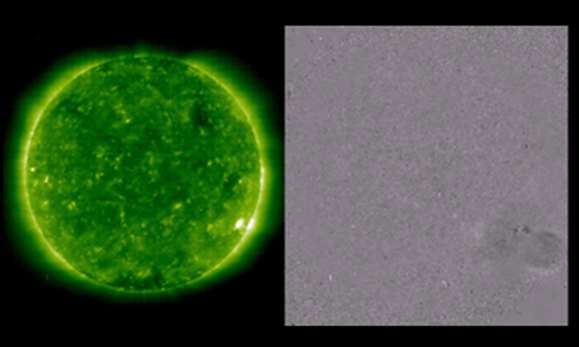 NOAA 1009, a SC24 group, produced a C1 flare on 11 December. This event was associated with an EIT wave and a faint CME. More importantly, the eruption was also associated with a radio burst, and it was the first one to be observed with the new radio receivers of the Humain Radioastronomy Station.
NOAA 1009, a SC24 group, produced a C1 flare on 11 December. This event was associated with an EIT wave and a faint CME. More importantly, the eruption was also associated with a radio burst, and it was the first one to be observed with the new radio receivers of the Humain Radioastronomy Station.
Ref: STCE news item of 11 December 2008
 |
 |





